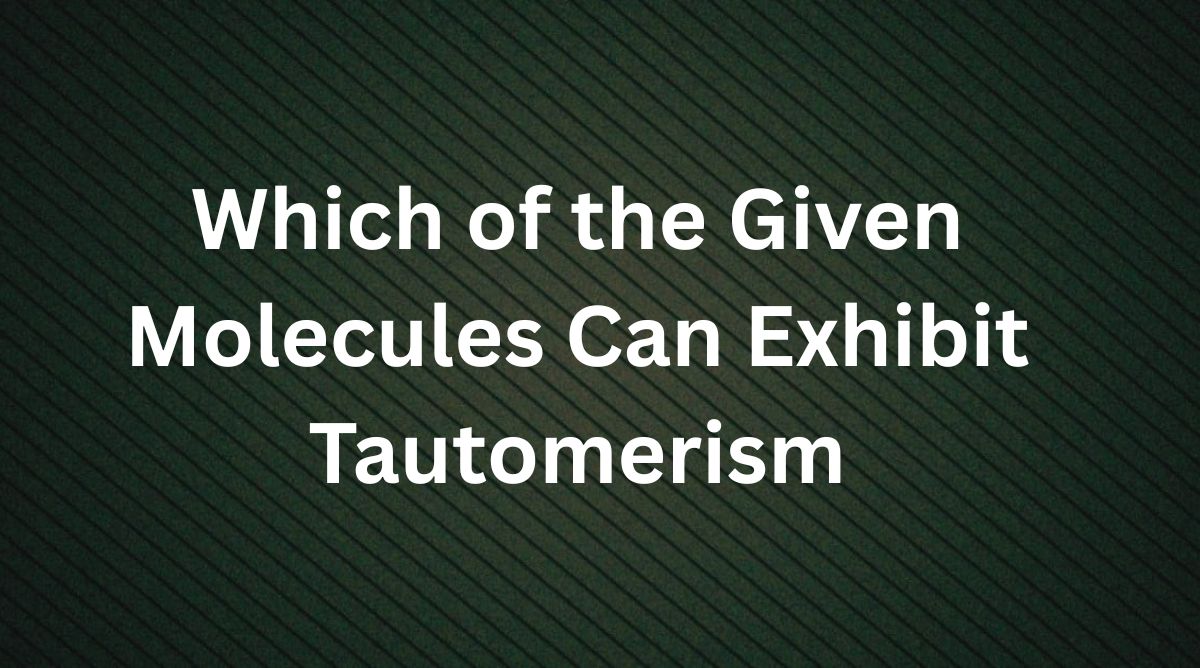
The straightforward solution is that molecules which possess labile (acidic) protons adjacent to a functional group capable of stabilizing a new double bond can exhibit tautomerism. In most common cases, this means that compounds featuring carbonyl groups (–CO–) with an adjacent CH or CH₂ group are likely candidates for keto-enol tautomerism. Other types, such as imine-enamine or lactam-lactim tautomerism, occur in molecules with suitable nitrogen-containing groups or heterocyclic frameworks.
Key Criteria for Tautomerism
To determine whether a molecule can exhibit tautomerism, consider the following factors:
- Presence of Labile Protons:
A proton (often an α-hydrogen) that is sufficiently acidic to be transferred under suitable conditions. - Adjacent Functional Groups:
Typically a carbonyl group (C=O) or an imine (C=N) that, upon shifting the proton, allows the formation of a double bond in a new position. - Stabilization of the Tautomeric Form:
The alternative tautomer must be stabilized by resonance, conjugation, or intramolecular hydrogen bonding.
Common Types of Tautomerism
Keto-Enol Tautomerism
- Mechanism:
Involves the migration of an α-hydrogen from a carbon adjacent to a carbonyl group to the oxygen atom, converting a keto form (C=O) into an enol form (C=C–OH). - Examples:
- Acetylacetone (2,4-pentanedione):
A classic example where the central hydrogen shifts, creating a stabilized enol form through resonance. - Simple Aldehydes/Ketones:
Compounds like acetaldehyde or acetone can, under certain conditions, show minor enol content.
- Acetylacetone (2,4-pentanedione):
Imine-Enamine Tautomerism
- Mechanism:
Occurs when a proton adjacent to an imine (C=N) group shifts, converting it to an enamine (C=C–NH) form. - Examples:
- Molecules in which the nitrogen is part of an imine functionality can exhibit this behavior if the resulting enamine is stabilized by resonance.
Lactam-Lactim Tautomerism
- Mechanism:
Seen in cyclic amides (lactams) where a proton shift can lead to a lactim (enolized amide) form. - Examples:
- Certain heterocyclic compounds, such as those found in nucleic acid bases (e.g., the thymine or guanine tautomers).
Applying These Principles
When given a list of molecules, you would look for:
- Carbonyl-containing compounds with adjacent CH or CH₂ groups—these are prime candidates for keto-enol tautomerism.
- Molecules with C=N bonds where an adjacent hydrogen can shift, leading to imine-enamine tautomerism.
- Cyclic amides or heterocycles that could exhibit lactam-lactim behavior.
For instance, if the provided list includes a beta-diketone like acetylacetone, an imine derivative, and a saturated alkane, only the beta-diketone and the imine derivative would typically exhibit tautomerism. The saturated alkane, lacking both the functional group and the labile proton, would not.
Conclusion
In summary, the molecules among the given set that can exhibit tautomerism are those that contain functional groups such as carbonyl or imine groups with adjacent labile protons, which enable the rearrangement of bonds and formation of alternative isomeric forms. This property is central to phenomena like keto-enol tautomerism, imine-enamine tautomerism, and lactam-lactim tautomerism, all of which rely on the ability of a proton to shift within the molecule, resulting in a stabilized new structure.
By examining the molecular structure for these features, one can identify which compounds in a list are capable of exhibiting tautomerism.
Also Check:
• Which Property of a Proton Can Change? An In-Depth Exploration
• Which Attribute Can Hold the JavaScript Version? An In-Depth Exploration
• Can Absolute Electrode Potential of an Electrode Be Measured? An In-Depth Exploration
• How Can Ethanol and Ethanoic Acid Be Differentiated? A Comprehensive Guide for Class 10




2 thoughts on “Which of the Given Molecules Can Exhibit Tautomerism? An In-Depth Analysis”